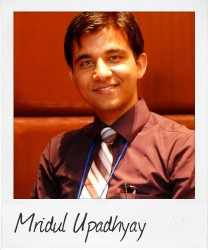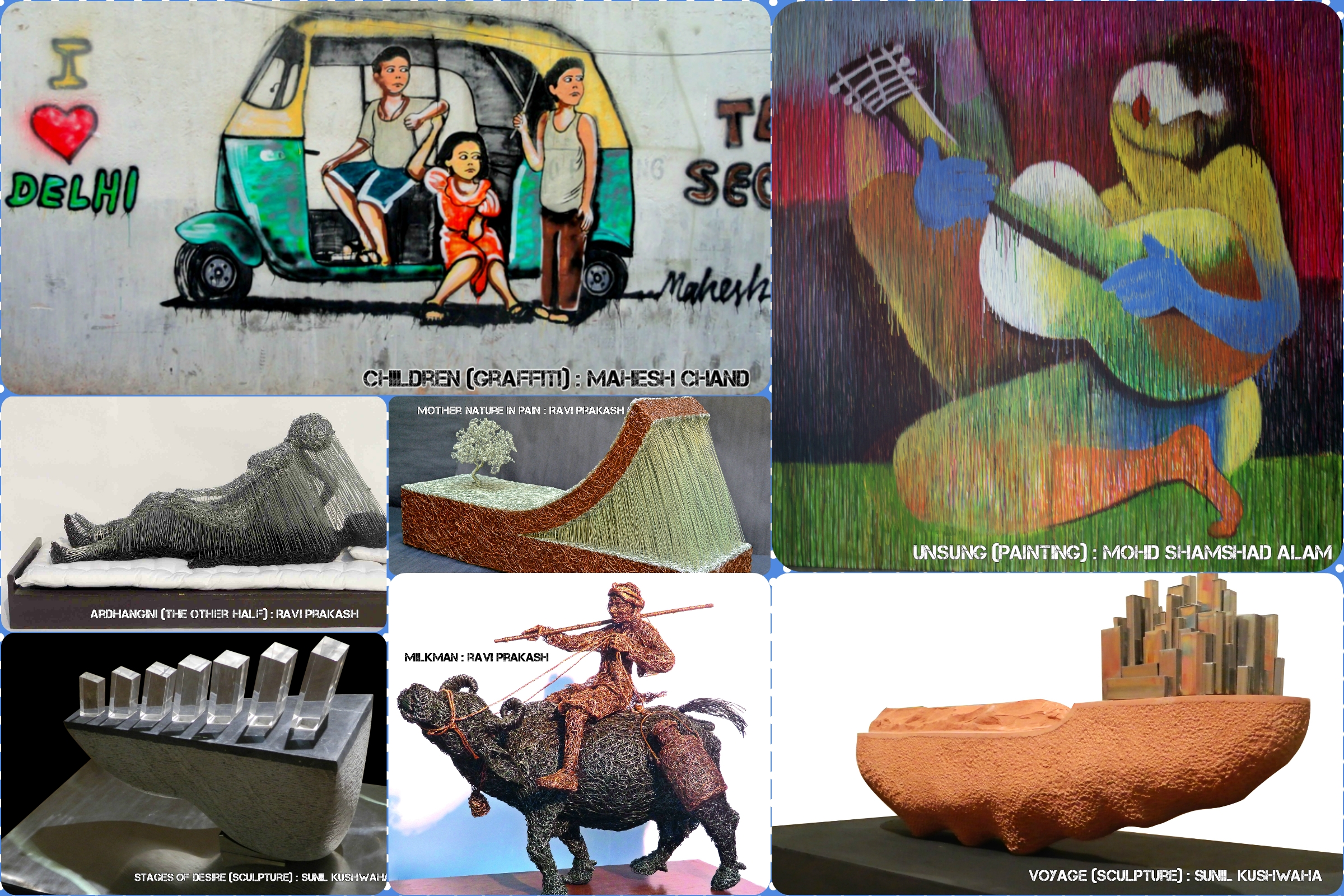"Artists and art use new concepts and materials"
February 17 Young artists are bringing new ideas to India’s arts scene, writes Mridul Upadhyay, 23, a Commonwealth Correspondent from New Delhi in India, as he explores the works of four creative young people.
Young artists are bringing new ideas to India’s arts scene, writes Mridul Upadhyay, 23, a Commonwealth Correspondent from New Delhi in India, as he explores the works of four creative young people.
Either in the form of first-ever language comprising pictorial alphabets or Leonardo da Vinci’s inventions, art leads the civilizations.
It has been affected by contemporary situations and has represented those situations elaborately. The world has encountered many artists; brilliant, revolutionary, fiddly, unconventional, pioneer, messy, poor and rich. It is a privilege as a viewer to witness the evolution process of young South Asian artists in esteemed universities and galleries.
Young artists are not rigid about the possibilities. They are bringing new concepts, medium, materials, methods and strong literature knowledge to the canvas. They are going beyond the traditional materials (stone, wood, terracotta, metals etc.) by using even such materials as surgical waste, and beyond common practices of colouring with brushes by using thumb, palm or just splashing the color on canvas. The critical observation of a few national awards-winning young artists whose brilliant work was awarded recently is documented in the collaboration of a young artist and curator, Tajammul Hasan.
‘Ravi Prakash’, a young sculpture, describes his artwork as an expressive representation of his social experience. The rawness can be seen in his work. He can work in many other materials but prefers to work in metal wire; an unconventional, flexible and long lasting material. Weaving and molding the wire to give a physical form shows his hard work. His fine sculptures include ‘Milkman’, ‘Mother Nature in Pain’ and ‘Ardhangini’ (the other half).
On the other hand, the abstract sculptures by ‘Sunil Kumar Kushwaha’ are based on perfectly combined concepts of social issues, criticism and atheism. In his works, repetition and rhythm implies dynamic, complex narratives, at times playful or urgent. His black stone-glass made sculpture ‘Stages of Desire’ represents a youthful life in slow motion, which shows how life is about setting continuously growing goals and achieving them for advancement. Another stone-metal sculpture, ‘Voyage’, represents the human journey from the Stone Age to modern developed age, while the running ship form indicates the desire of furtherance.
Versatile young painter ‘Mahesh Chand’ works in an Impressionistic style. He finds and catches reference points from daily life situations, culture, proverbs and social ill-factors, and satirically executes them in wall painting, graffiti and conceptual art. He has developed his own visual language, like semi-impressionistic human forms in the compositions, which are getting mature with the time.
The work of contemporary young artist ‘Mohd Shamshad Alam’ has several live elements like sensitive use of colorus, dripping style and distorted facial expressions. ‘Unsung’ is one of his recent paintings. In his works, the familiar abstracts disappear and again coalesce in to recognizable form.
These emerging artists add their voices to critical conversations in India’s art scene and beyond. While confirming the vibrancy and viability of traditional media, each artist’s work distinctly reaches towards the future, interrogating both medium and subject matter.
When asked about the field struggle, Tajammul Hasan said that most of the artists coming out of various prestigious art institutes do not get enough exposure and space to work, sell and earn in the art field. However talented, creative and sensitive, they are not treated as “Artists” but just ‘recently graduated students’ because they are young.
Young artists also feel that Indian art is still taught in colonial structure. The teachers are not evolving and involving in the current art trend. They try to teach and force the art scenario, themes, subjects and colour schemes best of their generation. Many established artists and gallery owners judge the artworks on a visually appealing basis and try to bind the art in certain types of materials and methods. First, they think about hugely profitable sale of the art work to people who do not even know what the art is about and who do not even care. And second, this pressurizes the young artist to quit their originality, suppresses their creativity which they develop over years and influences use of the commercial materials and methods in their art. Otherwise their creation is sometimes not even considered as an artwork.
But rejection increases their confidence. They face the struggle boldly. They seek training that is basic but not too restricting and limiting. They just want the art field to be more liberal, to choose what to do, and that the art work should be accepted and earn them a livelihood.
Photos: Mridul Kumar Upadhyay
…………………………………………………………………………………………………
About me:
A thinker, a social volunteer, a mechanical designer, a theater artist, a guitar player, a lyrics-writer, an amateur sketch artist, a cook, a traveler, a wannabe civil servant – there are many phrases I enjoy trying on me to describe what I see myself as.
…………………………………………………………………………………………………
Opinions expressed in this article are those of the author and do not necessarily represent the views of the Commonwealth Youth Programme. Articles are published in a spirit of dialogue, respect and understanding. If you disagree, why not submit a response?
To learn more about becoming a Commonwealth Correspondent please visit:
http://www.yourcommonwealth.org/submit-articles/commonwealthcorrespondents/
…………………………………………………………………………………………………




